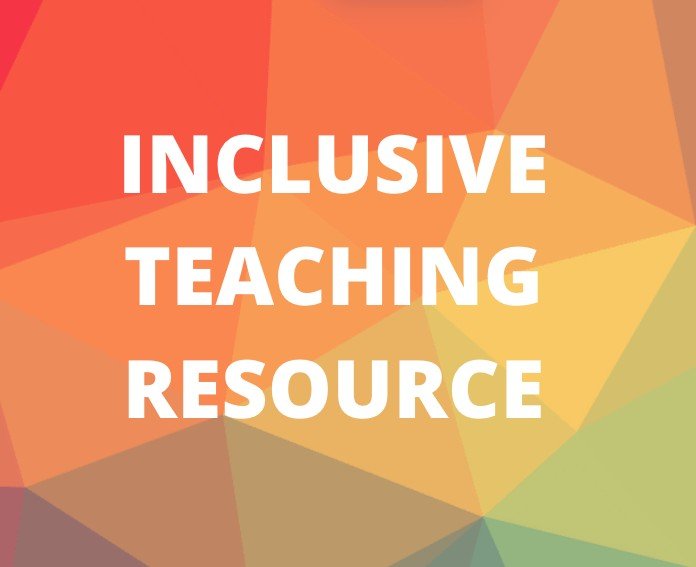Policy
Policy
Policy
In this section on Policy, you can find ideas on building inclusive syllabus policies and other classroom norms and expectations that meet the needs of a wide range of students.
You might browse the content below, or use the following table of contents to navigate to a particular suggested practice.
Implicit Norms
Consider how the implicit norms of your classroom or other learning environment might affect students unequally.
Explanation and/or Examples
Be aware of the norms that course policies are based on and the norms they will reinforce. For example, some students thrive in a quiet, orderly learning environment. Others thrive in a boisterous, spontaneous environment. Classroom norms often favor one and leave very little space for the other.
Resources
Policy Review Questions, Jeff Bonfield (Document)
Equal Impact
Consider how the stated expectations of behavior in your classroom or other learning environment might affect students unequally.
Explanation and/or Examples
Avoid policies which assume students have access to certain resources (for example, requiring medical documentation).
Have a suggested deadline, with no late penalty for submission after the deadline.
Use an attendance contract where students can decide individually whether they would like a portion of their grade to depend on attendance. For example:
- Avoid policies that require attendance (without alternative assignment) for events outside of regular class hours.
- Provide information on resources that support attendance, such as information on low-cost parking and transit.
Some examples of policies that could have unequal impact include:
- A policy against eating in class might affect a student who works full-time differently from a student who does not work.
- A policy against use of cell phones might affect students who have dependents or caregiver responsibilities differently from those who do not.
Resources
Strict Attendance Policies Adversely Impact Students, Sarah Bond, The Daily Illini (Article)
Time to Make Your Mandatory Attendance Optional?, Joe Gerald and Benjamin Brady, Chronicle of Higher Education (Article) (access via Rowan Libraries)
Academic Integrity
Apply the academic integrity policy in a fair, unbiased manner with the goal of enhancing student learning.
Explanation and/or Examples
Limit the use of proctoring software that may disadvantage neurodivergent students and students of color and contribute to a stressful assessment experience.
Reflect on how your own biases may come into play in detecting and reporting academic integrity violations.
Consider how your policy may focus on policing student behavior, instead of creating educational opportunities.
Resources
Proctoring Software, Mozilla (Video)
Bias in Plagiarism Accusations, Tiffany Martínez (Blog)
Faculty Information on Academic Integrity at Rowan, Rowan Academic Affairs (Website)
Technology and Privacy
Present course content so that objectives are attainable by students with varied prior knowledge.
Explanation and/or Examples
For online and hybrid courses, omit a “camera on” policy. Students may not be in an environment in which they feel safe or comfortable showing their physical environment.
When using digital platforms and tools (e.g., Canvas, e-texts, publisher content), inform students to the best of your ability about what data is collected and, if available, their options for limiting data collection.
Encourage students to consider the privacy implications of any digital platforms and tools that they use in and outside of the classroom.
Resources
10 Principles for Student Data Privacy and Equity, Student Privacy Compass (Article)
Data Privacy in Higher Education: Yes, Students Care, Educause Review (Web article)
5 Reasons to Let Students Keep their Cameras Off During Zoom Classes, The Conversation (Web article)
Disability and Accommodations
Design and apply classroom policies such that they do not create barriers for students with hidden or invisible disabilities.
Explanation and/or Examples
Provide opportunities for students to privately (voluntarily) disclose accommodation needs and honor them.
Anticipate and build common accommodations into the fabric of the course.
Resources
Invisible Disabilities and Postsecondary Education, Disabilities, Opportunities, Internetworking, and Technology, University of Washington (Web page)
College Students with “Hidden” Disabilities, Higher Education Research Institute, UCLA (Research brief)
Enhancing Engagement of Students with Invisible Disabilities: Rowan University Faculty Knowledge and Awareness and Student Perspectives, Shariese Abdullah (Dissertation on study of Rowan University)
Written Course Policies
State classroom policies in the syllabus.
Explanation and/or Examples
Do not apply or enforce unwritten policies in the classroom, what often amounts to a "hidden curriculum."
Resources
“Teaching the Hidden Curriculum Inclusive Teaching Guides & Tips,” Boston University (Web)
Rowan Recommended Syllabus Statements, linked to from the Rowan Faculty Center for Excellence in Teaching and Learning (Document)
Optimizing Student Learning
Create and enforce policies with the goal of optimizing student learning, with an understanding that what constitutes an optimal learning environment differs among students.
Explanation and/or Examples
Consider whether the primary purpose of a given course policy is to improve student learning. Sometimes the desire to simplify instructor workload can lead to policies which are detrimental to student learning.
Consider whether a policy such as a late work policy is meant to improve student learning or enforce a behavior expectation.
Resources
Coming Soon!

Inclusive Teaching Resource Home
Return to the Inclusive Teaching Resource homepage.

Instructional Content
From assigning diverse readings to making space for student choice, the Instructional Content section supports building courses to serve students' diverse identities and interests.

Teaching Practices
Visit the Teaching Practices section of the resource to learn about suggested pedagogical strategies for inclusive teaching.

Culture of the Community
Try one or more of these recommended approaches for building an inclusive classroom culture!

Assessment
Visit the Assessment section to learn about grading contracts, instructional alignment, and more recommendations for equitable grading and assessment practices.

Resources
Visit our curated list of resources to support inclusive teaching practices.
